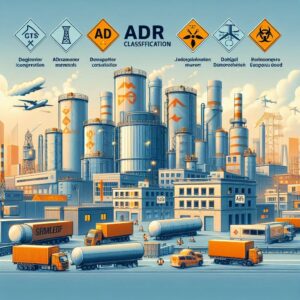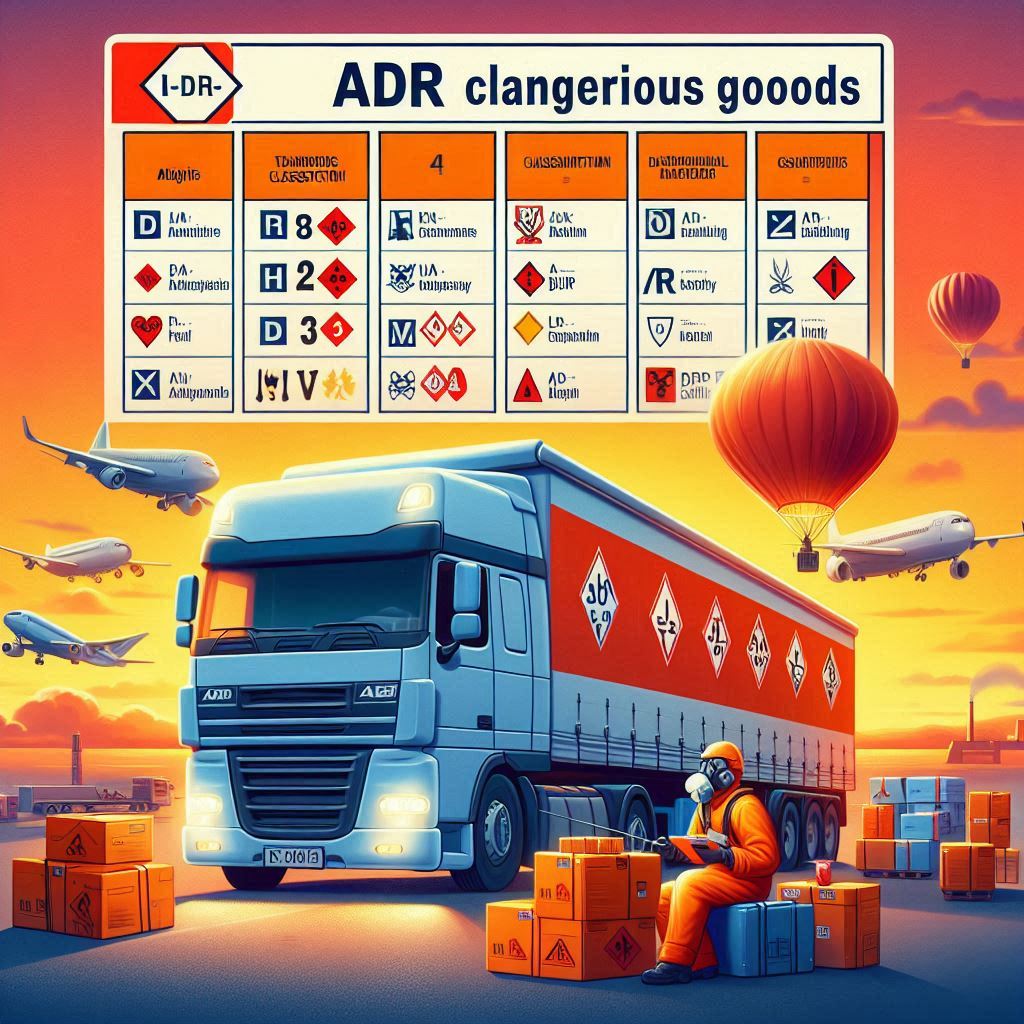ADR classes and classification of dangerous goods
Safe transportation of dangerous goods requires proper classification of materials according to ADR classes. This guide details all ADR classes, their characteristics and the rules of transportation. ADR classification of dangerous goods is the basis for the proper and legal transportation of hazardous materials.
Check out our ADR transport services
What is ADR classification?
ADR classification is an international system for dividing hazardous materials and objects into classes according to the predominant hazard. The ADR agreement specifies precisely how to classify a dangerous good and what conditions must be met when transporting it by road.

ADR classes - detailed breakdown:
Class 1 - Explosives
Includes explosives and explosive items, including:
- Desensitized explosives
- Pyrotechnic materials
- Items containing explosives Requires special transport conditions and the highest security measures.
Class 2 - Gases
This class includes:
- Flammable gases (e.g., propane, acetylene)
- Non-flammable and non-poisonous gases (e.g., nitrogen, helium)
- Poisonous gases (e.g., chlorine)
- Gas mixtures Transportation requires specialized tankers and constant pressure monitoring.
Class 3 - Flammable liquids
This class includes:
- Liquid fuels
- Solvents
- Paints
- Other liquids flammable with a flash point below 60°C Transport requires airtight packaging and fire protection.
See our specialized transportation
Class 4 - Flammable solids
It is divided into three subclasses:
- 4.1: Solid ignitable materials, self-reactive materials and polymerizable materials
- 4.2: Spontaneously combustible materials
- 4.3: Materials emitting flammable gases in contact with water
Class 5 - Oxidizing materials
It contains two subclasses:
- 5.1: Oxidizing materials
- 5.2: Organic peroxides These materials require special protection from contamination.
Class 6 - Poisonous and infectious materials
Divided into:
- 6.1: Poisonous materials capable of causing injury or death
- 6.2: Infectious materials containing microorganisms
Class 7 - Radioactive materials
Requires special permits and security. Transport possible only by special means of transport.
Class 8 - Corrosive materials
Substances that can damage epithelial skin tissue or mucous membranes. Require sealed, chemically resistant packaging.
Class 9 - Miscellaneous hazardous materials
Includes, among others:
- Environmentally hazardous materials
- Materials with elevated temperatures
- Other materials that pose a risk during transport
Safety in ADR transport
Transportation of hazardous materials requires:
- Specialized equipment for vehicles
- Trained crew
- Appropriate signage
- Shipping documentation
Learn about our safety standards
FAQ - Frequently Asked Questions:
How to read ADR markings?
The ADR board contains two numbers:
- Top: hazard identification number
- Lower: UN number of the substance
What does the number 30 on the ADR board mean?
30 means liquid inflammable material (3) without additional hazards (0).
How to check the ADR classification of the goods?
One should:
- Check the safety data sheet
- Verify in the list ADR dangerous goods
- Consult an ADR advisor
How many ADR classes are there?
ADR distinguishes 13 main classes, some of which are divided into subclasses.
Additional information:
The transportation of hazardous materials is strictly regulated. The ADR Convention, signed on September 30, 1957, is regularly updated to ensure the highest level of safety in road transportation.







